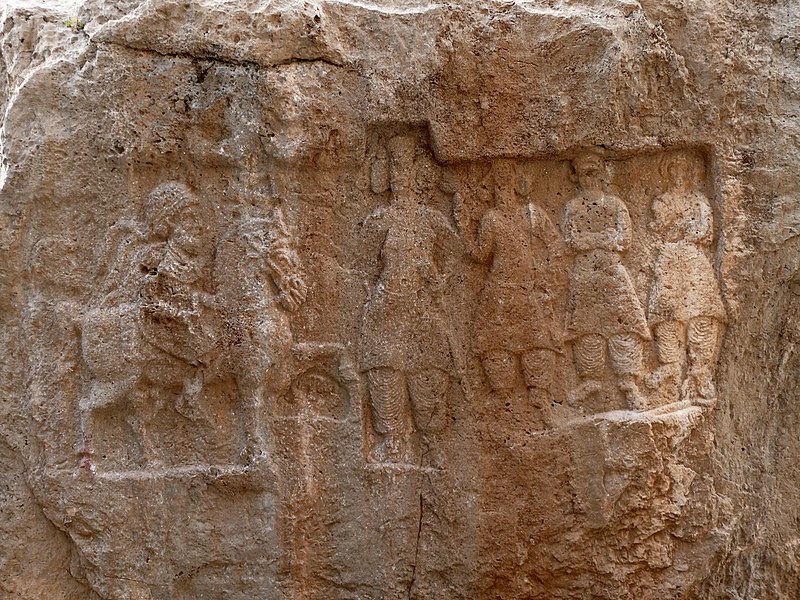Tiedosto:Xong-e Ashdar Parthian relief.jpg
Siirry navigaatioon
Siirry hakuun

Tämän esikatselun koko: 800 × 600 kuvapistettä. Muut resoluutiot: 320 × 240 kuvapistettä | 640 × 480 kuvapistettä | 1 024 × 768 kuvapistettä | 1 280 × 960 kuvapistettä | 2 560 × 1 920 kuvapistettä | 3 648 × 2 736 kuvapistettä.
Alkuperäinen tiedosto (3 648 × 2 736 kuvapistettä, 2,3 MiB, MIME-tyyppi: image/jpeg)
Tiedoston historia
Päiväystä napsauttamalla näet, millainen tiedosto oli kyseisellä hetkellä.
| Päiväys | Pienoiskuva | Koko | Käyttäjä | Kommentti | |
|---|---|---|---|---|---|
| nykyinen | 6. toukokuuta 2008 kello 17.14 |  | 3 648 × 2 736 (2,3 MiB) | Pentocelo~commonswiki | == Description == {{Information |Description= Parthian relief of Mithridatus Ist of Parthia at Xong-e Ashdar. City of Izeh, Khouzestan province, Iran |Source= Own work |Date= April 2008 |Author= Pentocelo |Permission= |other_versions= |
Tiedoston käyttö
Seuraava sivu käyttää tätä tiedostoa:
Tiedoston järjestelmänlaajuinen käyttö
Seuraavat muut wikit käyttävät tätä tiedostoa:
- Käyttö kohteessa azb.wikipedia.org
- Käyttö kohteessa ca.wikipedia.org
- Käyttö kohteessa de.wikipedia.org
- Käyttö kohteessa en.wikipedia.org
- Käyttö kohteessa es.wikipedia.org
- Käyttö kohteessa fa.wikipedia.org
- Käyttö kohteessa fr.wikipedia.org
- Käyttö kohteessa hu.wikipedia.org
- Käyttö kohteessa id.wikipedia.org
- Käyttö kohteessa it.wikipedia.org
- Käyttö kohteessa ja.wikipedia.org
- Käyttö kohteessa nl.wikipedia.org
- Käyttö kohteessa no.wikipedia.org
- Käyttö kohteessa pt.wikipedia.org
- Käyttö kohteessa ro.wikipedia.org
- Käyttö kohteessa ru.wikipedia.org
- Käyttö kohteessa sh.wikipedia.org
- Käyttö kohteessa sl.wikipedia.org
- Käyttö kohteessa tr.wikipedia.org
- Käyttö kohteessa vi.wikipedia.org
- Käyttö kohteessa zh.wikipedia.org

